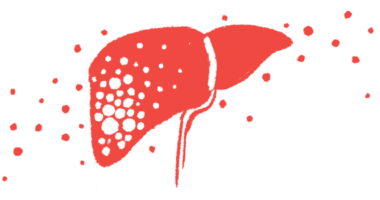Painful skin condition eases after man’s HIV was treated
Rare porphyria disorder characterized by painful skin lesions from sun exposure

The human immunodeficiency virus (HIV) was the trigger for porphyria cutanea tarda, a condition characterized by painful, blistering skin lesions from sun exposure, for a 33-year-old man in Spain, according to a recent case report.
Once his HIV was under control, his porphyria also eased.
His case was described in a brief report, titled “Porphyria cutanea tarda in a human immunodeficiency virus-positive patient,” which was published in the journal Medicina Clinica.
Porphyria cutanea tarda, or PCT, is the most common form of porphyria. Like many other porphyria types, PCT is marked by symptoms that include skin damage upon exposure to sunlight.
PCT more often brought on by environmental triggers than genetic mutations
PCT is characterized by the low activity of an enzyme called uroporphyrinogen decarboxylase, which is involved in the production of a molecule called heme that’s necessary for oxygen transport in the body. The disease can be associated with the presence of genetic mutations, but is more frequently brought on by environmental triggers. In particular, PCT is typically associated with liver damage.
HIV is a virus that infects and destroys a specific type of immune cell called CD4 T-cells, causing the immune system to become weaker. This in turn can set the stage for other infections and for cancer to arise.
There have been previous reports of HIV triggering PCT, but this is considered a very rare occurrence.
“Human immunodeficiency virus (HIV) has been rarely described as an isolated trigger of this disease, as in the case of our patient,” the researchers wrote.
Here, researchers described the case of a 33-year-old man with HIV that had progressed to a severe stage, sometimes referred to as acquired immunodeficiency syndrome, or AIDS. His CD4 T-cell count was very low, at 51 cells per cubic millimeter (mm3). For reference, a normal CD4 T-cell count is 500 to 1,200 cells/mm3.
Over the course of two months, the man began developing sores on the back of his hands and cysts around his earlobes. He also had abnormal hair growth around the corner of his eyes and temples.
Diagnostic tests revealed the patient’s urine and feces had abnormal levels of porphyrins, which are intermediary molecules that build up to toxic levels in PCT and other forms of porphyria. His urine also glowed pink under ultraviolet light, a telltale sign of porphyria. Ultimately, these tests confirmed the diagnosis of PCT.
The patient was also tested for hepatitis B and C, both of which are viral infections that can cause liver damage and trigger PCT, but the tests came back negative for both forms of hepatitis.
The researchers reported his skin condition improved markedly after he underwent treatment to restore his immune cell counts.







